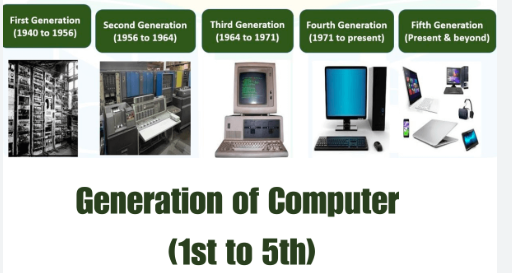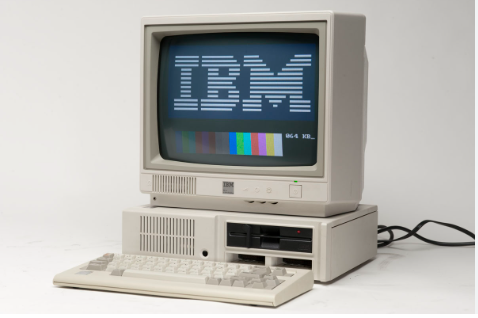
The History of Computers: 5 Generations You Should Know
Computers have undergone a remarkable transformation since their inception. From room-sized machines with vacuum tubes to today’s ultra-fast AI-powered systems, the history of computers is divided into five distinct generations — each marked by a breakthrough in technology. Understanding these generations helps us appreciate how far we’ve come and where we’re headed.
1st Generation Computers (1940–1956): The Vacuum Tube Era
Key Features:
- Used vacuum tubes for circuitry and magnetic drums for memory
- Extremely large, slow, and expensive
- Input/output via punched cards and paper tape
- Generated a lot of heat and often failed
Technologies Used:
- Vacuum tubes
- Machine language (binary code)
- Magnetic drum memory
Examples:
- ENIAC (Electronic Numerical Integrator and Computer)
- UNIVAC I (Universal Automatic Computer)
- IBM 701
Pros:
- Laid the foundation for electronic computing
- Capable of complex calculations
Cons:
- Huge power consumption and frequent breakdowns
- Bulky and costly
2nd Generation Computers (1956–1963): The Transistor Revolution
Key Features:
- Replaced vacuum tubes with transistors
- More reliable and energy-efficient
- Introduction of high-level programming languages like COBOL and FORTRAN
- Used magnetic core memory and tape storage
Technologies Used:
- Transistors
- Assembly and high-level languages
- Magnetic core memory
Examples:
- IBM 1401
- CDC 1604
- UNIVAC 1108
Pros:
- Smaller, faster, cheaper
- Easier to program and maintain
Cons:
- Still generated heat (though less than vacuum tubes)
- Limited to batch processing
3rd Generation Computers (1964–1971): The Integrated Circuit Breakthrough
Key Features:
- Used integrated circuits (ICs) that combined multiple transistors on a single chip
- Much smaller and faster
- Allowed for multi-programming and time-sharing
- Introduced operating systems
Technologies Used:
- Integrated Circuits
- Magnetic disks
- Operating systems
Examples:
- IBM System/360
- Honeywell 6000 series
- PDP-8
Pros:
- Highly reliable
- More efficient use of hardware
- Supported remote processing
Cons:
- Still required specialized environments (cooling, power)
4th Generation Computers (1971–Present): The Microprocessor Era
Key Features:
- Introduction of the microprocessor – an entire CPU on a single chip
- Development of personal computers (PCs)
- Use of graphical user interfaces (GUIs), mouse, and portable devices
- Widespread use of networks and the internet
Technologies Used:
- Microprocessors (Intel 4004 → Core i9)
- Semiconductor memory
- High-level programming languages (C, C++, Java)
- GUIs and networking
Examples:
- IBM PC
- Apple Macintosh
- Dell, HP, Lenovo desktops and laptops
Pros:
- Extremely powerful and affordable
- Portable and user-friendly
- Widespread use in every industry
Cons:
- Dependence on hardware upgrades
- Vulnerable to cybersecurity threats
5th Generation Computers (Present & Beyond): AI and Quantum Computing
Key Features:
- Based on artificial intelligence (AI) and machine learning
- Use of natural language processing (NLP) and advanced robotics
- Development of quantum computers
- Aiming for self-learning and self-correcting systems
Technologies Used:
- AI and ML algorithms
- NLP and neural networks
- Quantum chips (Qubits)
- Cloud and edge computing
Examples:
- IBM Watson
- Google DeepMind (AlphaGo)
- Quantum computers by IBM and Google
- Self-driving cars, AI assistants (like Siri, Alexa)
Pros:
- Advanced problem-solving and automation
- Huge potential in healthcare, finance, and science
- Quantum computing can revolutionize data processing
Cons:
- Still in development
- Ethical and privacy concerns
- High cost and technical complexity
Generation Comparison Chart
| Generation | Years | Key Tech | Examples | Highlights |
| 1st | 1940–1956 | Vacuum Tubes | ENIAC, UNIVAC | Bulky, slow, power-hungry |
| 2nd | 1956–1963 | Transistors | IBM 1401 | Smaller, faster, reliable |
| 3rd | 1964–1971 | ICs | IBM 360 | Multi-tasking & OS |
| 4th | 1971–Present | Microprocessors | PCs, Macs | Personal computers & Internet |
| 5th | Present & Beyond | AI, Quantum | Watson, DeepMind | Intelligent & evolving |
Final Thoughts
From simple calculating machines to powerful quantum systems, computers have evolved through five distinct generations. Each leap in technology brought us closer to the intelligent, interconnected world we live in today. As we move further into the AI and quantum era, understanding this journey helps us appreciate our digital roots — and prepare for a smarter future.


